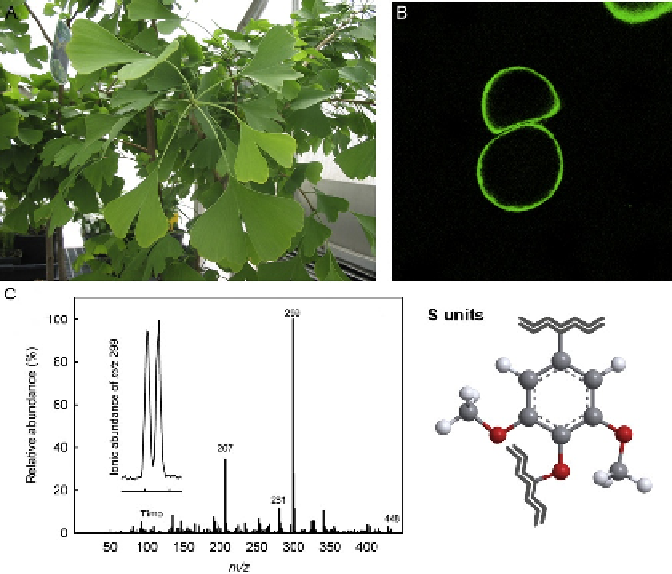Biology Reference
In-Depth Information
All gymnosperms except Gnetales have only tracheids in their xylem.
Angiosperms and Gnetales also have vessels. All gymnosperms are woody
and are the dominant vegetation in many colder and arctic regions.
Cycads are considered as the most basal gymnosperms, and currently they
are represented by 130 species, though they were more diverse during the
Mesozoic period (
Rai et al., 2003
).
Ginkgo biloba (
Fig. 8
) is the sole surviving species of Ginkgoales. During
the Mesozoic period it was most abundant, but today it is hardly known in
the wild. The most ancient fossils date from the late Permian period (260-
250 mya). G. biloba still maintains archaic reproductive characteristics, with
a type of fecundation that it shares with Cycadales.
Fig. 8. Lignins in an S-type gymnosperm, Ginkgo biloba. (A) Leaves from
G. biloba. (B) Cytochemical localization of lignins in suspension cell cultures of
G. biloba stained with acriflavine as seen by confocal laser scanning microscopy.
(C) Mass spectrum and gas chromatography profiles (inner box) of the thioethylated
monomers (erythro and threo isomers) arising from aryl-glycerol-
b
-aryl ether (
b
-O-4)
structures derived from sinapyl alcohol from G. biloba suspension cell culture lignins.

